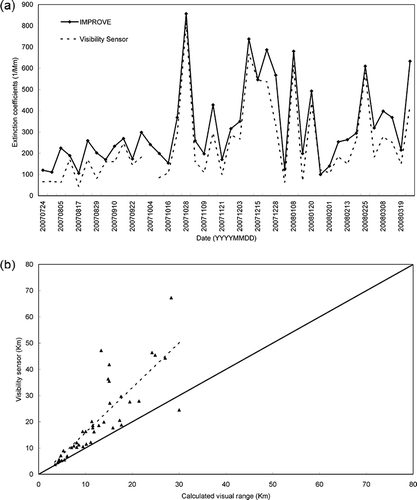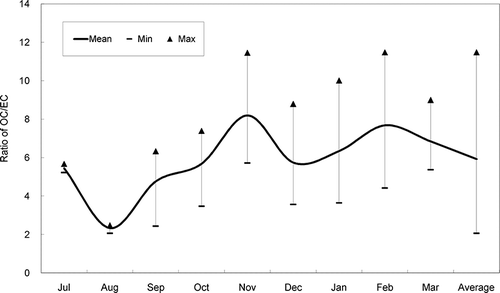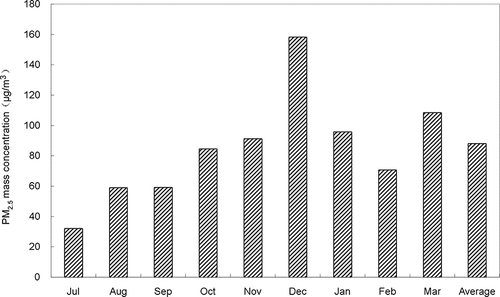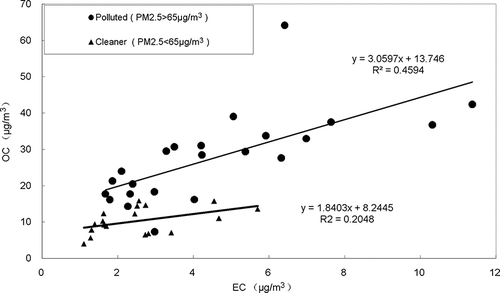Figures & data
Figure 6. The comparison of the secondary aerosol (SOC, nitrate, sulfate and ammonium) with primary aerosol (EC and POC) in relatively polluted and clean environment in July 2007 - March 2008.
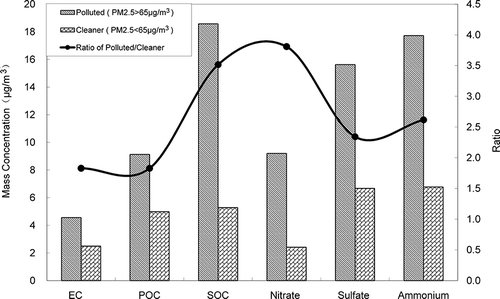
Figure 7. The extinction percentages of mean constituents and secondary aerosol of PM2.5 with varying relative humidity. (a) Dry condition. (b) RH = 80%. (c) RH = 95%.
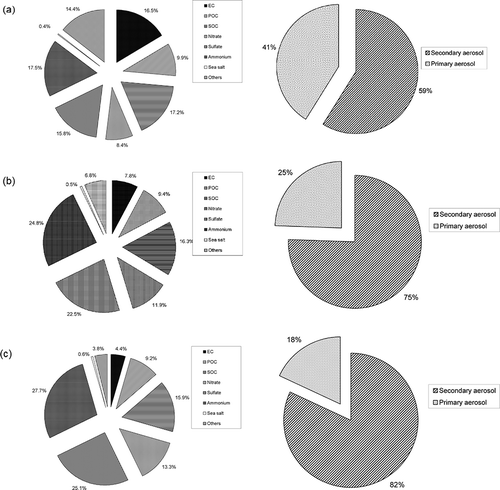
Figure 8. The extinction percentages of mean constituents spectra and secondary aerosol in relatively polluted and relatively clean conditions. (a) Dry condition. (b) RH = 80%. (c) RH = 95%.
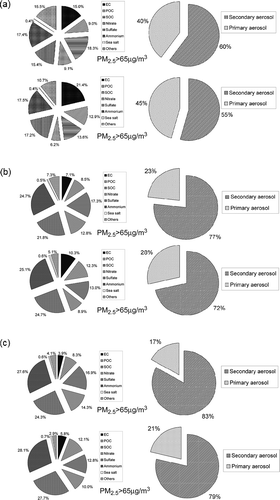
Figure 9. (a) The extinction coefficients and (b) the hygroscopic growths of the extinction coefficient and scattering coefficient with varying relative humidity in July 2007 - March 2008.
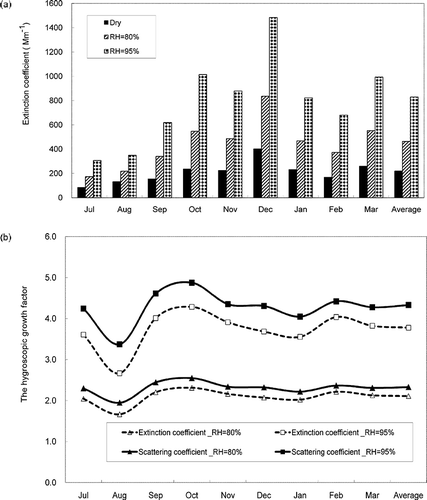
Figure 10. (a) The comparisons of extinction coefficient and (b) visual range between visibility sensor and calculation using IMPROVE Equationequation (1).
